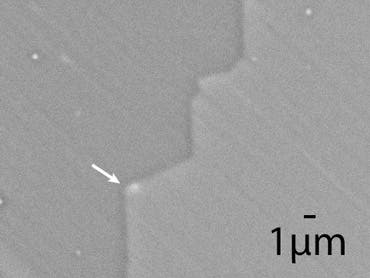The prettiest carbon allotropes of them all, diamonds have fascinated royalty, collectors and window shoppers since ancient times. Some gem-grade diamonds, no bigger than a thumb, sell for tens of million. Most, however, aren’t worth much. But even the most prized diamonds aren’t perfect, and it is these imperfections that might settle and age long debate among chemists and geologists: what’s the source of gem-grade diamonds? A recent analysis suggests both gem diamonds and the largely impure fibrous diamonds stem from the same source.
Diamonds form at high pressures and temperatures deep at depths of 140 to 190 kilometers (87 to 118 mi) in the Earth’s mantle from carbon-containing minerals. Rising magma then transports the diamonds closer to the surface where they’re mined. Most mines are in African states and Russia.
It takes one to 3.5 billion years for diamonds to form, but fibrous diamonds form more quickly taking only a couple million years. Since they form so fast, fibrous diamonds trap bits of surrounding matter inside the crystal structure which makes them look cloudy.
Geologists know for years that these sort of diamonds contain compounds called carbonates (the stuff shells are made of) and depending on the content you can infer how and where these formed. Gem-grade diamonds typically don’t contain carbonate impurities, so scientists have assumed that these form under different conditions than the fibrous variety.
Geochemists at Hebrew University of Jerusalem carefully looked for inclusions in diamond gemstones. In a couple distinguished for being symmetrical across a central boundary, they found a microscopic inclusion that became trapped along this boundary. When a beam of electrons was fired onto the diamonds, the researchers found 32 inclusions in eight of the thirty samples. Twenty such inclusions were the same carbonate-bearing fluids found in fibrous diamonds. “Visible mineral inclusions (>10 μm) and nitrogen aggregation levels in these clear macles are similar to other MC (monocrystalline) diamonds,” the researchers write.

It’s tiny, but geochemists found imperfections akin to fibrous diamonds in gem-grade ones. Credit: Hebrew University.
This suggests that both older, gem-grade diamonds and the younger variety form by a similar mechanism, the team reports in Earth and Planetary Science Letters.
The work “gives us the first strong constraint on how gem diamonds grow,” says Thomas Stachel, a petrologist at the University of Alberta in Canada who was not involved in the research. “People had proposed various explanations for how these diamonds form, but it seems diamond formation is less diverse than we thought.”
It gets very interesting at this point because this means plate tectonics could have already been active 3.5 billion years ago. The most recent research on the matter found modern plate tectonics — complete with its subduction zones, spreading centers, earthquakes and all — probably started about 3.2 billion years ago.










